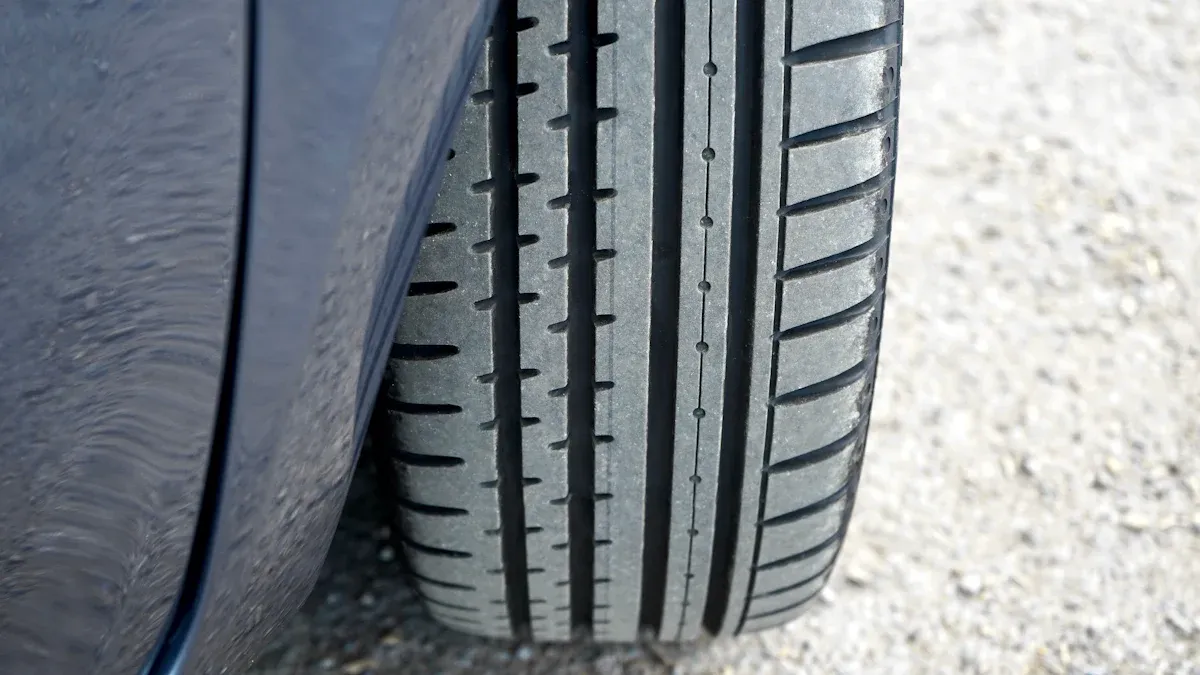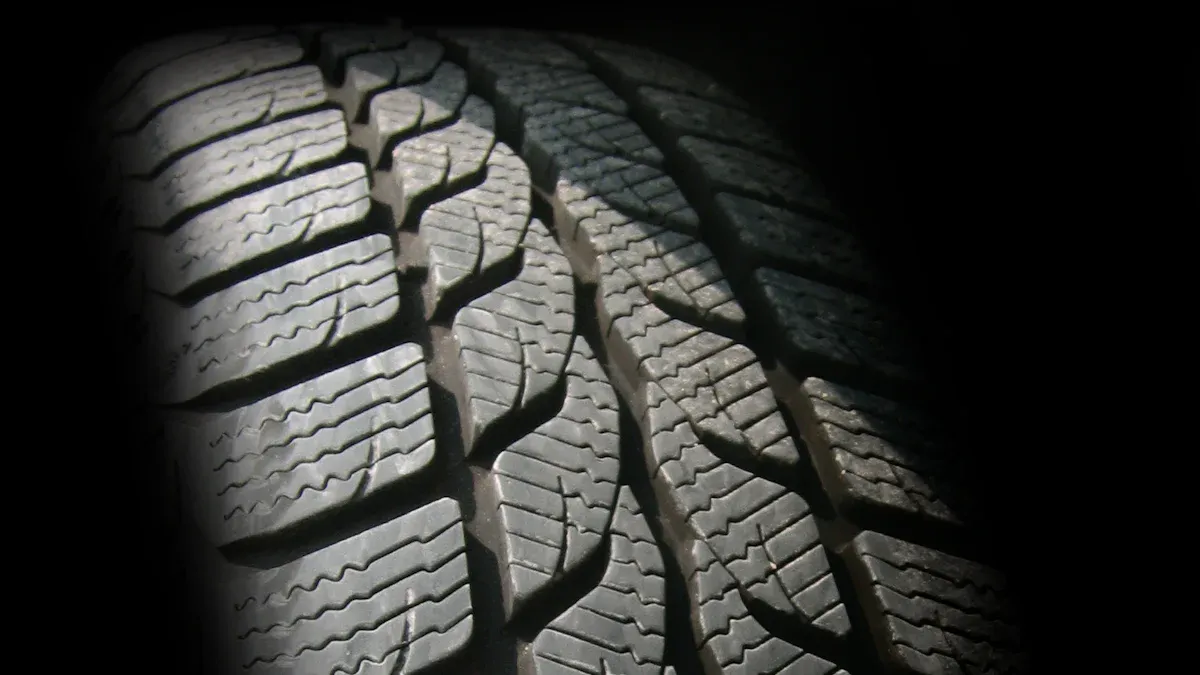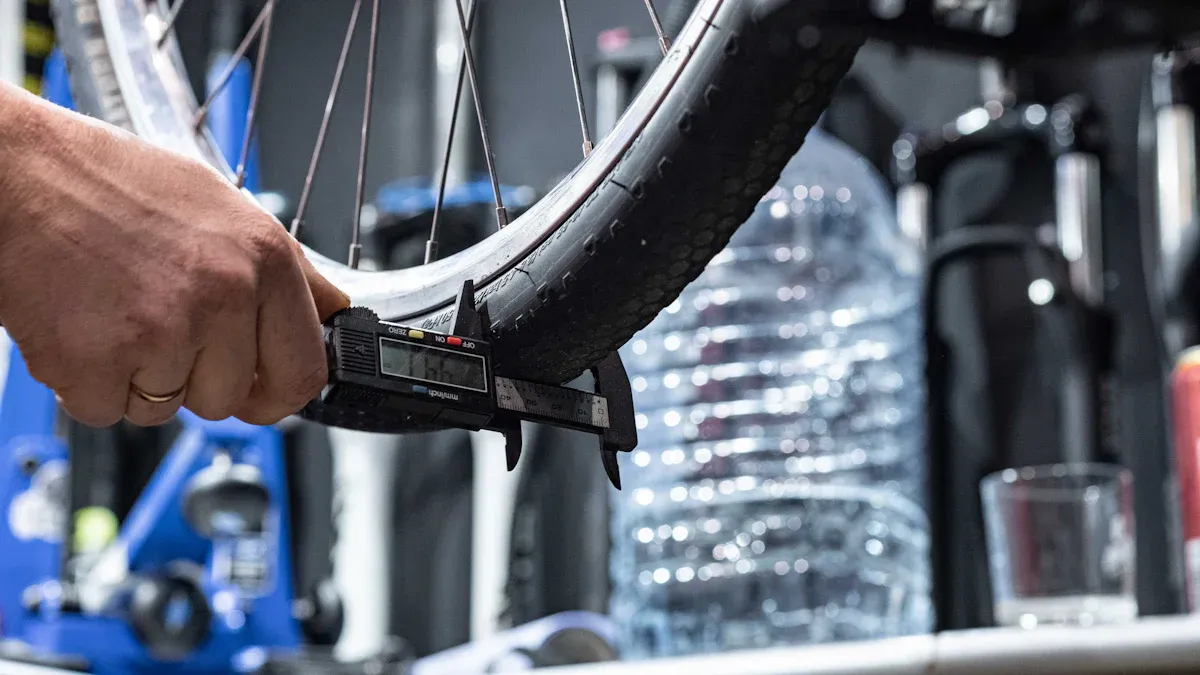
Measuring tire tread depth is crucial for preventing hydroplaning in wet conditions. When your tires lack sufficient tread, they struggle to grip the road, increasing your risk of losing control. A tire tread scanner offers a quick and effective solution. You can assess your tire tread depth in under a minute. These scanners provide accurate measurements, often in less than five seconds per tire. This speed makes it easy to ensure your safety without wasting time.
Najważniejsze informacje
Regularly check your tire tread depth at least once a month to ensure safety and prevent hydroplaning.
Use a handheld tread depth gauge for accurate measurements; it provides quick results and identifies uneven wear.
Replace tires when tread depth reaches 4/32 inches for better traction in wet conditions, even though the legal minimum is 2/32 inches.
Clean the tire surface before measuring to avoid false readings and measure at multiple points for a comprehensive assessment.
Understanding the relationship between tread depth and stopping distance can help you make informed decisions about tire maintenance.
Dlaczego głębokość bieżnika ma znaczenie

Understanding Hydroplaning
Hydroplaning occurs when your tires encounter more water than they can disperse. This situation creates a thin film of water that separates your tires from the road. As a result, you lose traction, making it difficult to steer, brake, or control your vehicle. The risk of hydroplaning increases with higher speeds and greater water volume on the road.
To prevent hydroplaning, maintaining adequate tire głębokości bieżnika is essential. Safety organizations recommend a minimum tread depth of 2/32 cala to prevent hydroplaning. However, it is wise to consider replacing your tires when they reach 4/32 cala, especially in wet conditions. A Consumer Reports study found that tires worn down to 5/32 inches significantly increase the risk of hydroplaning.
Tread Depth and Traction
Tread depth plays a crucial role in your vehicle’s traction on wet surfaces. As your tire tread wears down, its ability to channel water away diminishes. This reduction in water displacement leads to an increased risk of hydroplaning.
The relationship between tread depth and wet surface performance is exponential. Tires with only 2/32 cala of tread have nearly 50% less traction on wet pavement compared to those with 4/32 cala. This significant reduction underscores the importance of maintaining adequate tread depth for safe driving in wet conditions.
Here’s a quick look at how tread depth affects stopping distance on wet surfaces:
Głębokość bieżnika | Wet Stopping Distance (60 mph) | Braking Efficiency |
|---|---|---|
10/32″ (new) | 234 feet | 100% |
6/32″ | 253 feet | 92% |
4/32″ | 282 feet | 83% |
2/32″ (legal minimum) | 66% |
As you can see, as tire tread depth decreases, the stopping distance on wet roads increases significantly. For instance, new tires with 10/32 inches of tread stop in 234 feet, while tires with the legal minimum tread of 2/32 cala require 356 feet—up to 52% more distance. This highlights the critical connection between tread depth and road safety in wet conditions.
How a Tire Tread Scanner Works

Features of the Tread Depth Detector
A tire tread detector offers several features that enhance your ability to measure tread depth accurately. Here are some key features that differentiate high-quality models from basic ones:
Funkcja | High-Quality Models | Basic Models |
|---|---|---|
Accuracy and Speed | Precise measurements within seconds | Slower, less accurate readings |
Łatwość użycia | Ergonomic design, intuitive interface | May be cumbersome to use |
Rejestrowanie danych | Ability to record and generate reports | Limited or no recording |
Comprehensive Analysis | Full tread surface measurement, irregular wear detection | Basic depth measurement only |
Wytrzymałość | Sturdy build for daily use | Less durable, may break easily |
High-quality skanerów bieżnika opon, such as the TREADREADER and TOPDON Tire Gauge, utilize advanced technology to ensure reliable readings. The TREADREADER creates a 3D scan from 320,000 points, providing enhanced accuracy that surpasses traditional gauges. The TOPDON Tire Gauge measures tread depth at three points—inner, center, and outer—offering a comprehensive check of your tires.
Measurement Process and Accuracy
Using a tire tread measuring tool is straightforward. You simply place the gauge into the tread grooves, and it provides a reading in seconds. This quick and reliable measurement allows you to assess your tire’s condition without hassle.
The accuracy of these devices is impressive. For instance, the TREADREADER boasts an accuracy of less than 0.2mm (or 0.008 inches), while the TOPDON Tire Gauge offers an accuracy of ±1% + 0,0012 cala (0,03 mm). Such precision ensures that you can trust the readings, helping you make informed decisions about tire maintenance.
Recent advancements in technology have further improved these devices. Many modern tread depth detectors now feature IoT connectivity for real-time data transmission. AI-powered algorithms enhance measurement precision and reduce human error. Additionally, digital tire tread detectors support data-driven decision-making, allowing you to monitor your vehicle’s health more effectively.
By using a tire tread scanner, you gain access to full tread surface analysis, which helps identify irregular wear patterns. This information is crucial for maintaining optimal performance and safety on the road.
Comparing Measurement Methods
Handheld Gauge vs. Coin Method
Jeśli chodzi o measuring tire tread depth, you might consider using a coin. However, this method has significant limitations. The coin method only measures a single location on the tire. It does not account for uneven wear across the tire, leading to an incomplete assessment of tire health. Here’s a quick comparison of the two methods:
Metoda | Niezawodność | Measurement Area |
|---|---|---|
Handheld Gauges | High accuracy, multiple measurements | Comprehensive assessment |
Coin Method | Low accuracy, single location | Limited assessment |
Using a coin can be misleading. For example, the penny test may not meet all legal requirements for tire tread depth. By the time Lincoln’s head is fully visible, your tires may already be in violation of safety laws. This can lead to dangerously worn tires. The quarter test is a more reliable method, but it still falls short compared to a handheld gauge.
Handheld Gauge vs. Professional Services
While professional tire tread measurement services offer advanced technologies like laser scanning technology and AI applications, handheld gauges provide a practical alternative for everyday drivers. Professional services ensure precise measurements and minimize human error. They often use optical tire tread scanners that deliver objective digital data. This technology enhances accuracy and reduces compliance risks.
However, you can achieve reliable results with a handheld gauge. These devices allow you to measure tread depth quickly and accurately. You can assess your tires without waiting for a professional service. Additionally, the convenience of using a handheld gauge means you can check your tires regularly, ensuring optimal safety.
Tips for Using a Tread Depth Gauge
Best Practices for Accuracy
To ensure you get the most accurate readings from your tread depth gauge, follow these best practices:
Clean the Tire Surface: Remove any dirt or debris from the tire tread before measuring. This helps prevent false readings.
Measure at Multiple Points: Check the tread depth in several locations across the tire. This accounts for any uneven wear.
Use Consistent Pressure: Apply the same amount of pressure each time you insert the gauge into the tread grooves. This consistency improves measurement accuracy.
Check Environmental Conditions: Temperature and road surface conditions can affect your readings. Avoid measuring in extreme temperatures or on wet surfaces to ensure reliable results.
When to Measure Tread Depth
Regularly checking your tire tread depth is essential for maintaining safety. Here are some key times to measure tire tread:
At Least Once a Month: Make it a habit to inspect your tire tread depth monthly. This routine helps you catch any issues early.
Before Long Journeys: Always check your tires before embarking on a long trip. This precaution ensures your tires are ready for the road.
When You Notice Signs of Wear: Look for indicators that suggest you should measure your tread depth immediately. These signs include:
Uneven wear
Bad vibrations while driving
Sidewall cracks
Tire bubbles or bulges
Age of the tires
To measure tire tread depth, you can use the quarter test. Insert a quarter upside down into the tire tread; if you can see the top of Washington’s head, it’s time for new tires. Regular monitoring of tread depth is crucial for vehicle safety. Tires with only 2/32″ of tread remaining require 22% more stopping distance compared to new tires. By routinely checking your tires, you can enhance your overall safety on the road.
Using a handheld tread depth gauge significantly enhances your vehicle’s safety. Regularly measuring your tire tread depth helps you maintain better traction and braking performance. This practice reduces the risk of accidents, especially in wet conditions.
Consider these safety benefits:
Safety Benefit | Opis |
|---|---|
Enhanced Vehicle Safety | Adequate tire tread ensures better traction and braking performance, significantly reducing the risk of accidents. |
Early Detection of Tread Wear | Regular monitoring allows drivers to address issues before they become severe. |
Prevention of Accidents | Good tread depth is essential to prevent hydroplaning, where tires lose contact with the road surface due to water. |
Identification of Mechanical Issues | Uneven tread wear can indicate alignment problems or other mechanical issues, which could lead to tire failure. |
AAA’s research shows that worn tires can increase stopping distances by 43% in wet conditions. This translates to an additional 87 feet when traveling at highway speeds. By taking proactive steps to measure your tire tread depth, you can significantly improve your safety on the road. Remember, your tires are your only contact with the road. Keep them in top shape to ensure a safe driving experience.
FAQ
What is hydroplaning?
Hydroplaning happens when your tires lose contact with the road due to water. This loss of traction makes it hard to steer or brake, increasing the risk of accidents.
Jak często powinienem sprawdzać głębokość bieżnika opony?
You should check your tire tread depth at least once a month. Additionally, inspect your tires before long trips or if you notice signs of wear.
What is the minimum tread depth for safety?
The legal minimum tread depth is 2/32 cala. However, for better safety in wet conditions, consider replacing tires when they reach 4/32 cala.
Can I use a coin to measure tread depth?
Yes, you can use a coin, but it’s less accurate. A handheld gauge provides a more comprehensive assessment of your tire’s condition.
How can I improve my tire safety?
Regularly measure your tire tread depth, maintain proper tire pressure, and rotate your tires. These steps enhance traction and reduce the risk of hydroplaning.
Zobacz także
Znaczenie monitorowania głębokości bieżnika opony dla bezpieczeństwa
Używanie miernika głębokości bieżnika opony do precyzyjnych pomiarów
Zrozumienie detektorów głębokości bieżnika opon inteligentnych i ich funkcji






